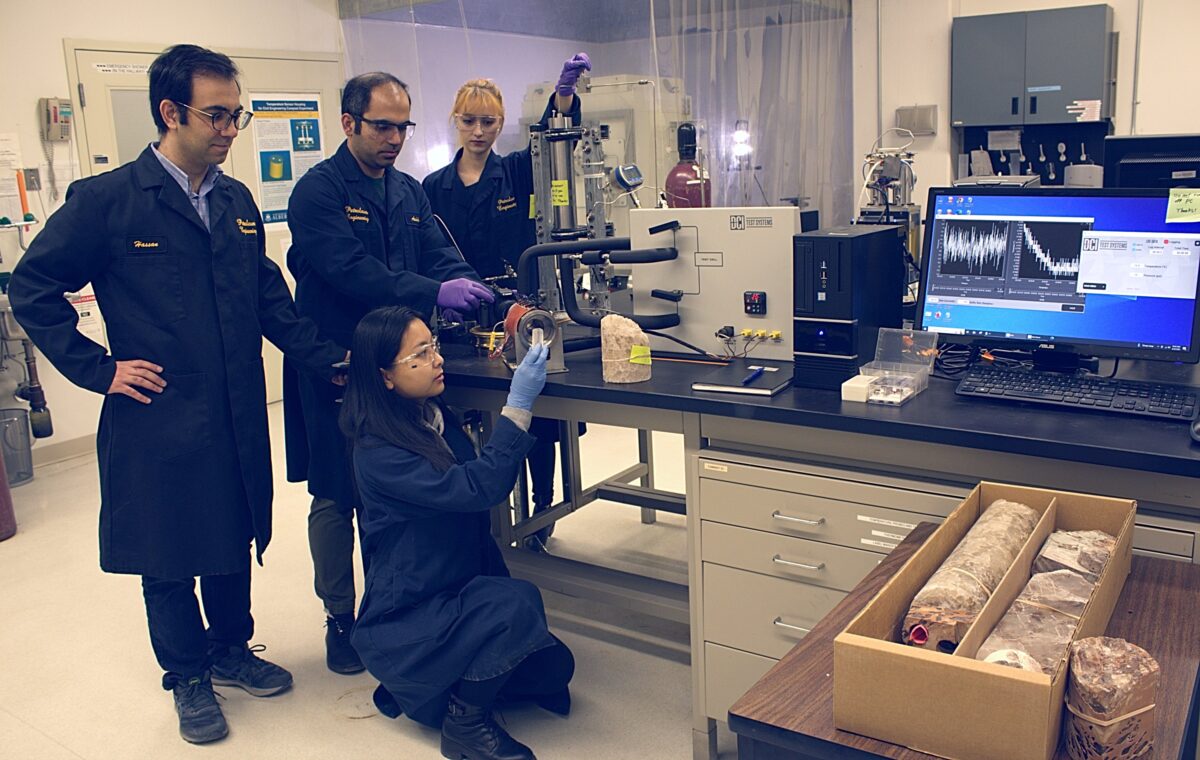Vortex Energy Corp, a company focused on acquiring, exploring and developing mineral properties in North America, is partnering with the University of Alberta on research into hydrogen and energy storage at its Robinsons River Salt Project.
The company has committed $300,000 to a research team at the university that is working on designing and implementing the first field trial of hydrogen storage of domal salt in Canada. The partnership is expected to run for two years.
While hydrogen is a clean and useful energy source, it is complex to store because it is light and can easily escape, Paul Sparkes, CEO of Vortex Energy, told pv magazine USA.
“This is where salt caverns come in. These are natural underground formations created by salt deposits. Scientists have found that these caverns are able to hold on to hydrogen gas for a prolonged period of time,” Sparkes added.
Caverns can be created in salt domes by drilling into them and injecting the rock with water, which dissolves the salt, and the resulting brine is extracted, leaving a large cavity, Sparkes said. Hydrogen electrolyzers can convert water into hydrogen by using renewable energy and this can be stored, and reconverted to electricity when needed over long periods of time, making it more suitable for seasonal or long-term storage needs, Sparkes added.
Vortex Energy is working on its Robinson River Salt project, which has two of the largest salt caverns discovered in Atlantic Canada that have the potential to be developed for hydrogen or energy storage, Sparkes said. The two salt structures are estimated to hold at least 800,000 tonnes of hydrogen within more than 60 caverns, according to the company. The company plans to begin drilling at the project this November, after which it will re-evaluate further development and field trial application. Pending funding, Vortex Energy hopes to advance toward cavern storage in approximately two to three years, Sparkes said.
The University of Alberta research time will conduct proof of concept experiments on core samples, to design and implement the first field trial of hydrogen storage in domal salt in Canada, according to Sparkes. The project is expected to last two years, comprising four research phases: optimizing the depth interval of the proposed storage caverns; evaluating the possibility and extent of hydrogen loss through the proposed cavern wall; evaluating the extent of hydrogen contamination; and evaluating the mechanical stability of the proposed caverns, Jason Latkowcer, in corporate development with Vortex, told pv magazine USA.
Clean hydrogen could play an important role in decarbonizing hard-to-abate industries. But the more we rely on the resource, the more we’re going to need storage to preserve it, Latkowcer said.
“The potential market for hydrogen storage in salt caverns is substantial. Green hydrogen storage in salt caverns has a number of advantages, including an indispensable chain link, flexibility, safety, and small footprint,” he said.
This content is protected by copyright and may not be reused. If you want to cooperate with us and would like to reuse some of our content, please contact: editors@pv-magazine.com.








By submitting this form you agree to pv magazine using your data for the purposes of publishing your comment.
Your personal data will only be disclosed or otherwise transmitted to third parties for the purposes of spam filtering or if this is necessary for technical maintenance of the website. Any other transfer to third parties will not take place unless this is justified on the basis of applicable data protection regulations or if pv magazine is legally obliged to do so.
You may revoke this consent at any time with effect for the future, in which case your personal data will be deleted immediately. Otherwise, your data will be deleted if pv magazine has processed your request or the purpose of data storage is fulfilled.
Further information on data privacy can be found in our Data Protection Policy.